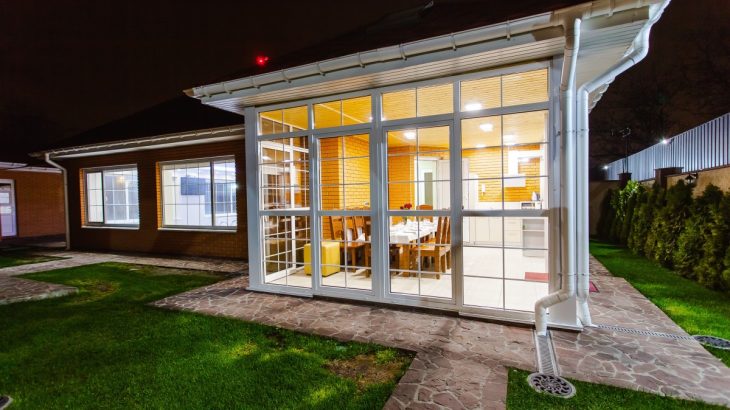What Material Should I Choose for the Structure of a Custom-Made Veranda?
The veranda is an extension of the house entirely glazed, which constitutes a true living room, totally open on the outside. It can house a living room, a kitchen, a library, an office or even a swimming pool. Made to measure, it will perfectly adapt to your needs and the layout of your house. And allowing you to take advantage of the garden and the outside light will offer your home a real added value.
What material should you choose for your veranda?
If the glass roof blends into the volumes of the house, the veranda represents an independent extension, for which you will have to choose a structural material and the best possible glazing. The material will have a significant impact on the aesthetics of your veranda, but especially on its durability.
Wood

The custom-made wooden veranda is not reserved for old houses. Its warm appearance and timeless charm allow it to adapt to all styles.
Many finishes are possible (e.g., stain, paint). The wood can be chosen among classic species, which must be treated with an autoclave to guarantee the resistance of the custom-made veranda over time. Then come the exotic woods with warm colours and naturally rot-proof, but whose species (teak, red cedar) are the most expensive.
Disadvantage: the wood must be treated regularly, approximately every 2 or 3 years.
Note: the autoclave treatment consists of placing wood in a box, then making a vacuum of air there before injecting the treatment in all its cavities by overpressure.
Aluminum

Aluminum is the most used material for constructing verandas because of its multiple advantages. It can support colossal glass panes, even though its structure and posts are fragile. Its flexibility allows it to obtain original and customized shapes. Durable and stable, aluminum resists bad weather, does not rust, does not deform with time and is declined in many colours.
But beware, aluminum is not a good insulator: it is, therefore, imperative to opt for a custom-made veranda with a thermal break to overcome this drawback. It is then made of two aluminum profiles separated by a non-conductive joint, prohibiting any contact with the outside. This also reduces side effects such as condensation and mould.
Steel
Steel has long been the classic material for verandas before being dethroned by aluminum. Resistant to impact and deformation, steel can be used to make significant, durable custom verandas. Malleable, it can be adapted to all shapes and styles for a truly custom patio. Contemporary, the steel veranda offers elegant lines.
But be careful; the steel veranda must be treated against corrosion. And since its insulation is not as good as a wooden veranda, it must be combined with high-performance glazing.
Note: PVC verandas are the most economical of all, but they are often sold in kit form for self-assembly.
What about the glass?
Thanks to the new insulating glass and efficient heating solutions, the veranda is pleasant to live in all seasons. For the glazing of your verandah, you can choose between glass, which allows a great luminosity, and polycarbonate, which is a good insulator and costs less.
Building a custom-made veranda
The rules
Start by finding out about the feasibility of the work by consulting the land use coefficient at the town hall. Then, if the surface area of your veranda is less than 20 m², a simple declaration of work is sufficient. Beyond that, you will have to apply for a building permit.
Prices and points of sale
For a made-to-measure veranda, contact a professional in custom builds, and do not hesitate to ask for an estimate. Count the price according to the complexity of the structure, the material, the glazing or the manufacturer.



















